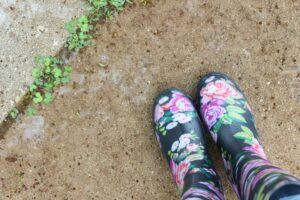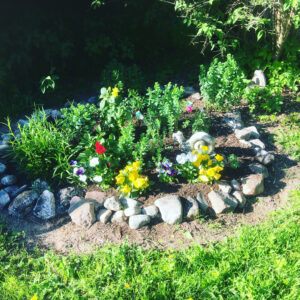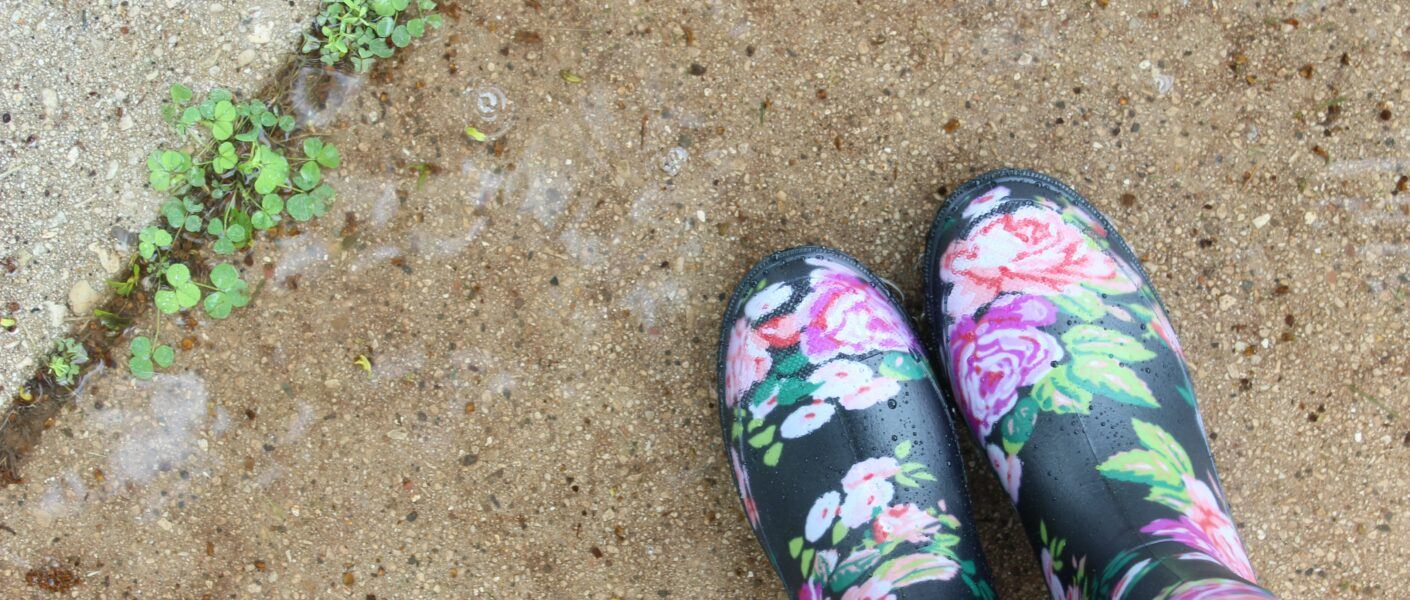
Photo by Jen Theodore on Unsplash
Wild Flowerbeds
Now, while I’m on alternating leave, I have time to improve our garden. Last summer, I was sick, and the summer before was a terrible mosquito year, so the gardening was almost wholly left. My husband weeded the worst weeds from the flower beds, but that was all. Now, as I was walking one of the beautiful and warm spring days in the backyard, I was frankly freaked out.
The weeds had completely taken over the flower beds, the garden bond had become the kingdom of the cattail, the midsummer rose looked like a thicket, and the lawn covered with dry leaves. There was a hard job in front of me, but I just had to roll up my sleeves and get to work.

Rampant Midsummer Rose
The first thing I did was go after midsummer rose. That’s a lot of work! When I was crumbling inside the bushes, the bush started to look better piece by piece. I focused on cutting only dry branches so the rose wouldn’t get mad for the whole summer. I didn’t get it quite as I want it, but I’ll need to be patient and cut more next spring.
But next spring I’m going to get real leather rose gloves because cut-off gloves won’t help those thorn bastards. So my hands looked like pincushion again. I knew it would take a week to dick out all the thorns from the back of my hands and fingers.
Battle against weeds
Next, I kept working on the smallest flower bed, and I tackled it with determination. I was grabbing and tearing ground elders and all sorts of other weeds from the flower bed. It probably disappeared even the beautiful bell flowers, because they were so little and I couldn’t see them inside the jungle of weeds.
Luckily the phloxes were distinguishable because they already had grown of about five centimeters. Also, the sedums had stretched nicely, although I had to lift the smallest bushes entirely out of the bench to separate the roots of the weeds.
When I once started that flower bed, I put a root mat on the lawn, and I laid it on cobblestones. Outside the rocks, I had left a 10-centimeter sand lane to separate the bench from the grass. Now that sand lane had grown full of weeds. Luckily, their roots fell off the sandland quite quickly.
I had to lift the stones so I could get the roots of the weeds under of them. The root mat had worked, but the weeds had crept through the edges into the bench. There were a lot of worms, and that’s a good sign. The earth will then be fluffy and fabulous flowers to grow.
Wild lupine flowers
 The own chapter was though a couple of lupins that had appeared on the bench. For God’s sake, their roots were thick and tenacious. I sat on my tail on the lawn and pulled from the roots with two hands. I was almost ready to give up when the thickest one didn’t bud up. I was wondering if I should call my husband to help me. However, I didn’t give up, and I decided to break the root into smaller sections.
The own chapter was though a couple of lupins that had appeared on the bench. For God’s sake, their roots were thick and tenacious. I sat on my tail on the lawn and pulled from the roots with two hands. I was almost ready to give up when the thickest one didn’t bud up. I was wondering if I should call my husband to help me. However, I didn’t give up, and I decided to break the root into smaller sections.
That’s how I got them ripped off. So good luck if our government is going to attempt to demolish all the lupins from road foals. It’s going to need excavators! And I don’t think you can get all the root snippets out of the soil anyway.
A couple of days, I had to spend with that, but finally, I made it look like a flower bed again. I added black garden soil and planted a few violets which I had bought on the front edge of the flower bed. Under the seedlings, a bit of chicken poop, and then just think what kind of new flowers I could plant to empty holes.
On a grocery trip, I visited the Tokmanni store, and there were a couple of dahlias and a couple of new phloxes. Voilá, now just get it watered and wait for the flowers to burst.






